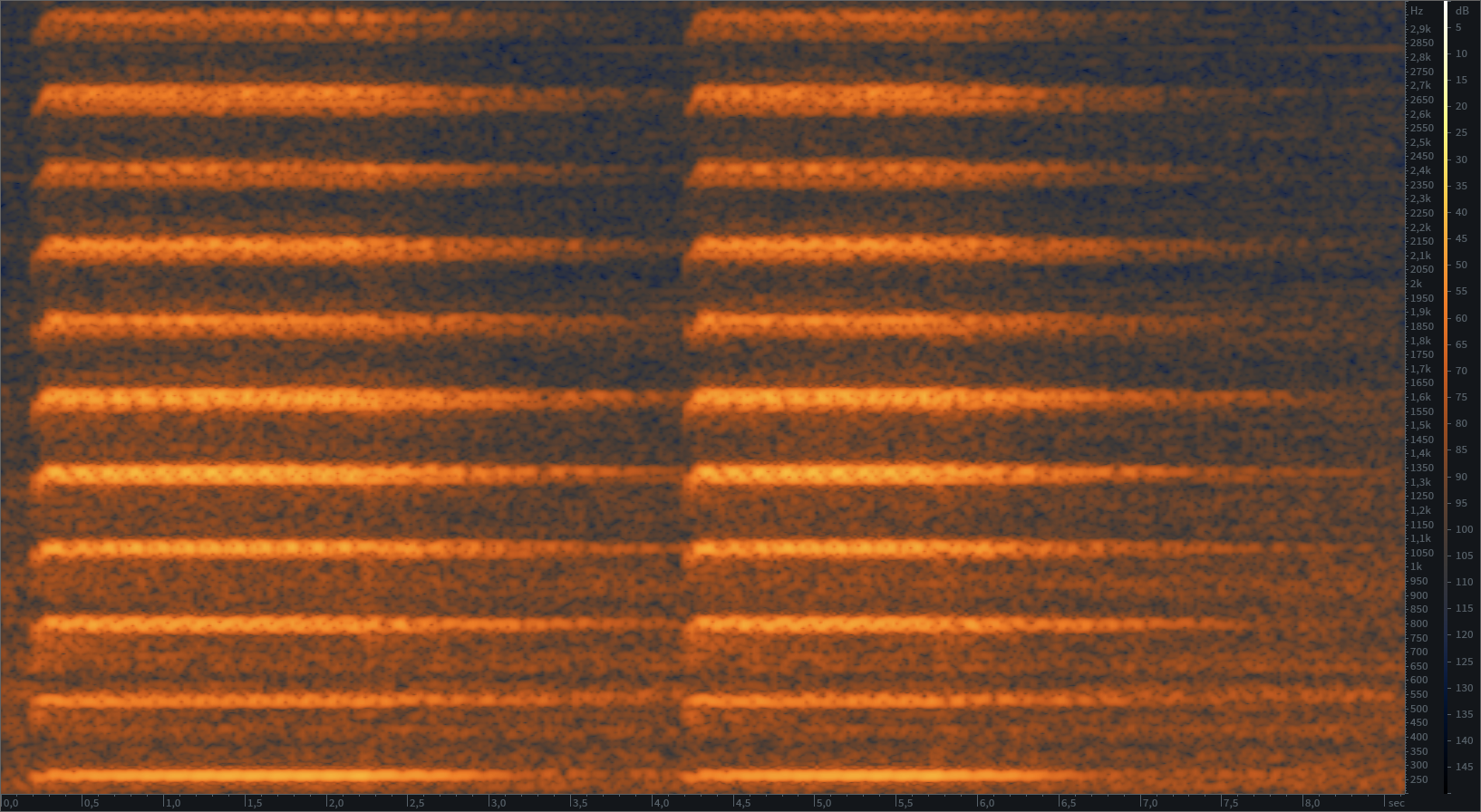VIRTUAL ITALIAN ORGANS
di Andrea Bonzi
In a previous article we gave an account of the possibility of implementing the Tremolo by exploiting the Hauptwerk wind model, which allows - in addition to a very accurate modeling - the user to adjust the depth and speed of the beats.
We first inserted this type of Tremolo into the OTT positive: a rigorously dry sample set and therefore without multi-releases. By implementing it in the "SANTA MARIA NASCENTE AL QT8 - TAMBURINI 1959" sample set, equipped with two dry+wet stereo channels and as many as five levels of multiple releases, we ran into what we believe to be an intrinsic limitation of Hauptwerk in managing the application of Tremolo (and of course any dynamic variation given by the wind-model) to "wet" samples.
The image below is the spectrogram of an Oboe note (C3, middle C), wet channel, to which the Tremolo obtained with the Hauptwerk wind model is applied. The frequency and amplitude modulation of each harmonic is evident, which the spectrogram renders as an undulation of the relative lines.

It is also noted how, when the note is released, the reverb tail is "frozen" at the intensity and frequency value calculated by the wind model at the time the sound detaches: after which the reverb tail continues linearly, without any effect being applied.
But even the sustain - despite being wet samples - is simply modulated in amplitude and intensity as if it were a dry sound: completely lacking the convolution typical of a real reverb in a real environment, in which every emitted frequency remains present, turning off gradually, for the entire duration of the acoustic reflections. Compare the previous image with this one, where the Tremulant with wind model is applied to a dry sample with convolution reverb (always the same note in the same register):

At a glance, the "dragging" of each frequency emitted by the sample modeled by the Tremulant for the entire duration of the reverb is very evident - exactly what happens in reality and what our ear is used to perceiving.
We summarize in a short explanatory video the results of our experiments, which concern both the Tremulant reproduced with the wind model and the one with the Hauptwerk native model:
The lack of dynamic modeling of the sounds - particularly evident in the case of the Tremulant but which concerns any application of the Hauptwerk wind-model to wet samples with multirelease - is the main cause of the sterility of the models integrated in Hauptwerk: it is unfortunately a question of not an easy solution since wet samples, by definition, incorporate the response of the environment which therefore can hardly be susceptible to further convolution without artificiality.
For this reason, the most effective solution may seem to be that of double sampling, which also includes the Tremulant effect where it is present: unfortunately we have already seen in the previous article how even this solution is not free from problems and compromises, above all regarding the lack of phase coherence of the oscillations in samples necessarily taken at different times - while in the pipe original they sound simultaneously. This solution is also expensive both in terms of sampling and in terms of hardware needs, multiplying the size of the sample set.
As far as we are concerned, we are convinced that, unless we give up the multi-release system to turn to dry sampling with convolution reverb (provided we have adequate IR of the environment in which the organ we are going to sample is located, at least one for each desired perspective) it would be a significant step forward for Hauptwerk to be able to credibly simulate environmental convolution by applying it to wet samples: such an implementation would contribute to a significant improvement in the realism of the sample sets.